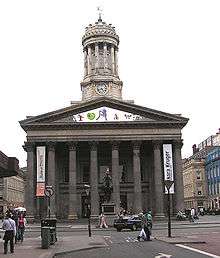People's Palace, Glasgow
The People's Palace and Winter Gardens in Glasgow, Scotland is a museum and glasshouse situated in Glasgow Green, and was opened on 22 January 1898 by the Earl of Rosebery.
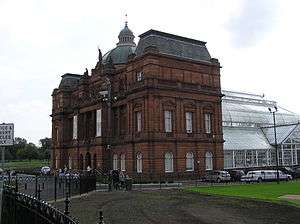 | |
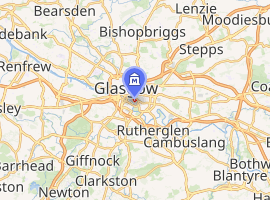
| |
| Established | 1898 |
|---|---|
| Location | Glasgow Green, Glasgow, G40 1AT, Scotland |
| Visitors | 342,577 (2018)[1] |
| Website | www.glasgowlife.org.uk |
Early history
At the time, the East End of Glasgow was one of the most unhealthy and overcrowded parts of the city, and the People's Palace was intended to provide a cultural centre for the people. It was designed by the City Engineer, Alexander B. McDonald. At the opening ceremony Lord Rosebery stated: "A palace of pleasure and imagination around which the people may place their affections and which may give them a home on which their memory may rest". He declared the building "Open to the people for ever and ever".
Features
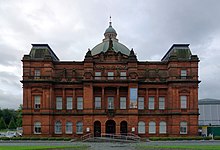
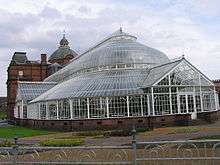
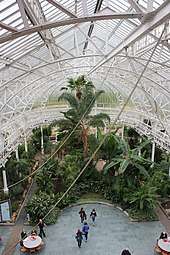
Originally, the ground floor of the building provided reading and recreation rooms, with a museum on the first floor, and a picture gallery on the top floor. Since the 1940s, it has been the museum of social history for the city of Glasgow, and tells the story of the people and the city from 1750 to the present day. The collections and displays reflect the changing face of the city and the different experiences of Glaswegians at home, work and leisure. Current displays (as of March 2009) include glimpses of typical Glasgow history such as life in a "single end" (a one-room tenement home), going to "The Steamie" (the communal laundry), nights out at "The Dancing" in the famous Barrowland Ballroom and trips "Doon The Watter" (down the Firth of Clyde) on steamers such as the Waverley. The palace is also home to renowned Scottish Socialist John MacLean's campaign desk, which can be found on the first floor.
Closure
The building was closed for almost two years, to allow restoration work to be carried out, with the re-opening being timed to coincide with the 100-year anniversary of its first opening in 1898; this is recorded on a plaque mounted just inside the main entrance. Renovations extended to include the Winter Gardens to the rear of the building, where the glasshouse was extensively restored and reglazed, and the gardens tidied.
Restoration
As part of the restoration the artist Ken Currie was commissioned to create a series of paintings for the ceiling dome of the museum. The eight panels mark the 200th anniversary of the Calton weavers Massacre of 1787 and depict the history of Glasgow's workers from that point to the present day.
In 2005 the Doulton Fountain was extensively refurbished and moved to its present position in front of the museum. At 46 feet high and 70 feet across at its base, it is the largest terracotta fountain in the world. It was originally gifted to the city in 1888 after the International Exhibition of Science, Art and Industry by Sir Henry Doulton to commemorate Queen Victoria’s Golden Jubilee, and is decorated with a figure of the Queen and groups from Canada, Australia, India and South Africa representing Britain's Empire.
The People's Palace cat
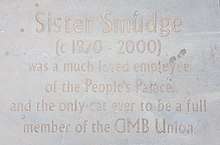
During the 1980s, a cat called Smudge gained local fame when she became a member of the General, Municipal, Boilermakers and Allied Trade Union, after NALGO refused her admission as a blue collar worker.[2]
References
- "ALVA - Association of Leading Visitor Attractions". www.alva.org.uk. Retrieved 25 August 2019.
- "Glasgow'S Cover Girl Cat". The Washington Post. 15 June 1988. Retrieved 31 January 2017.
